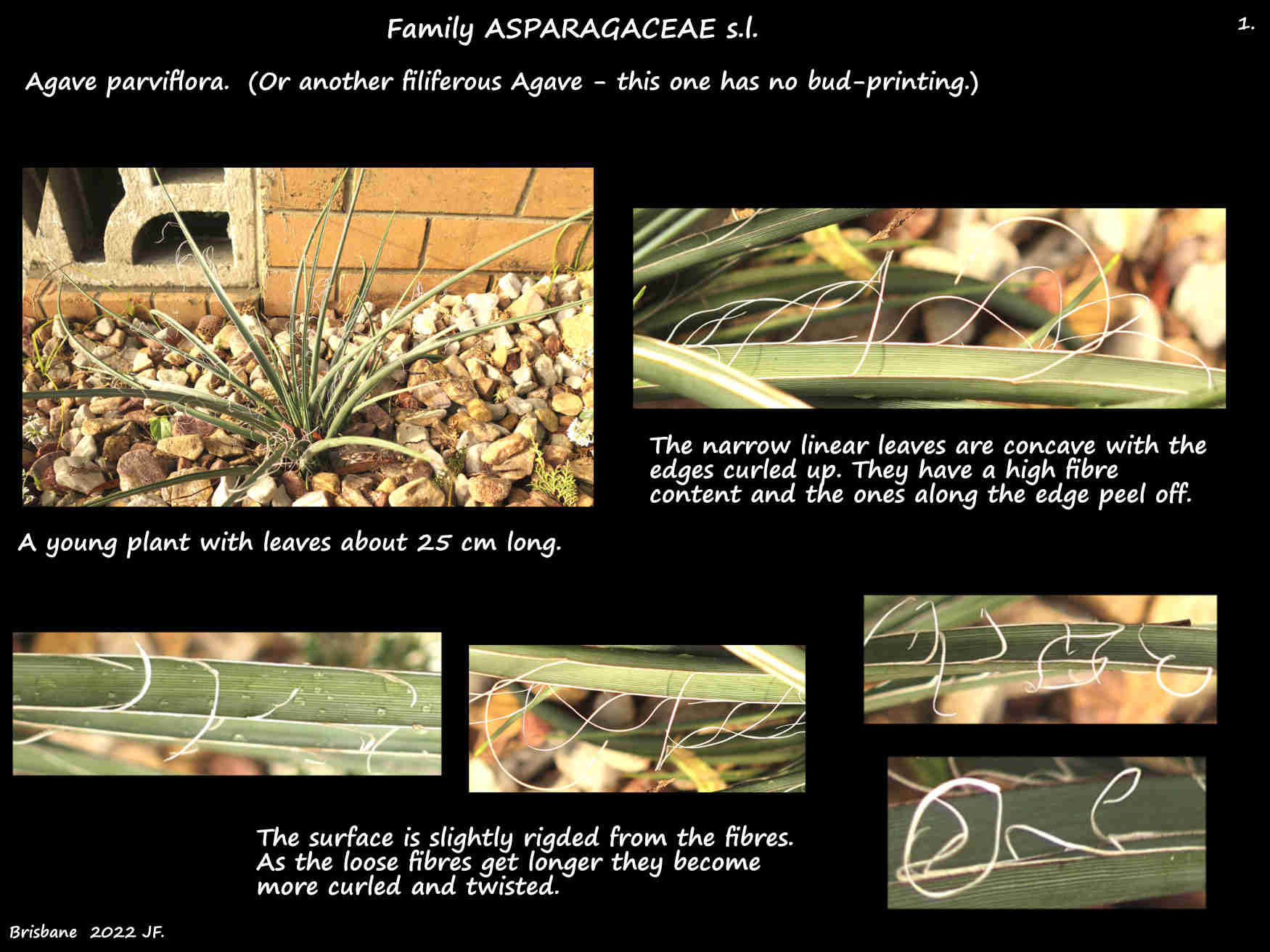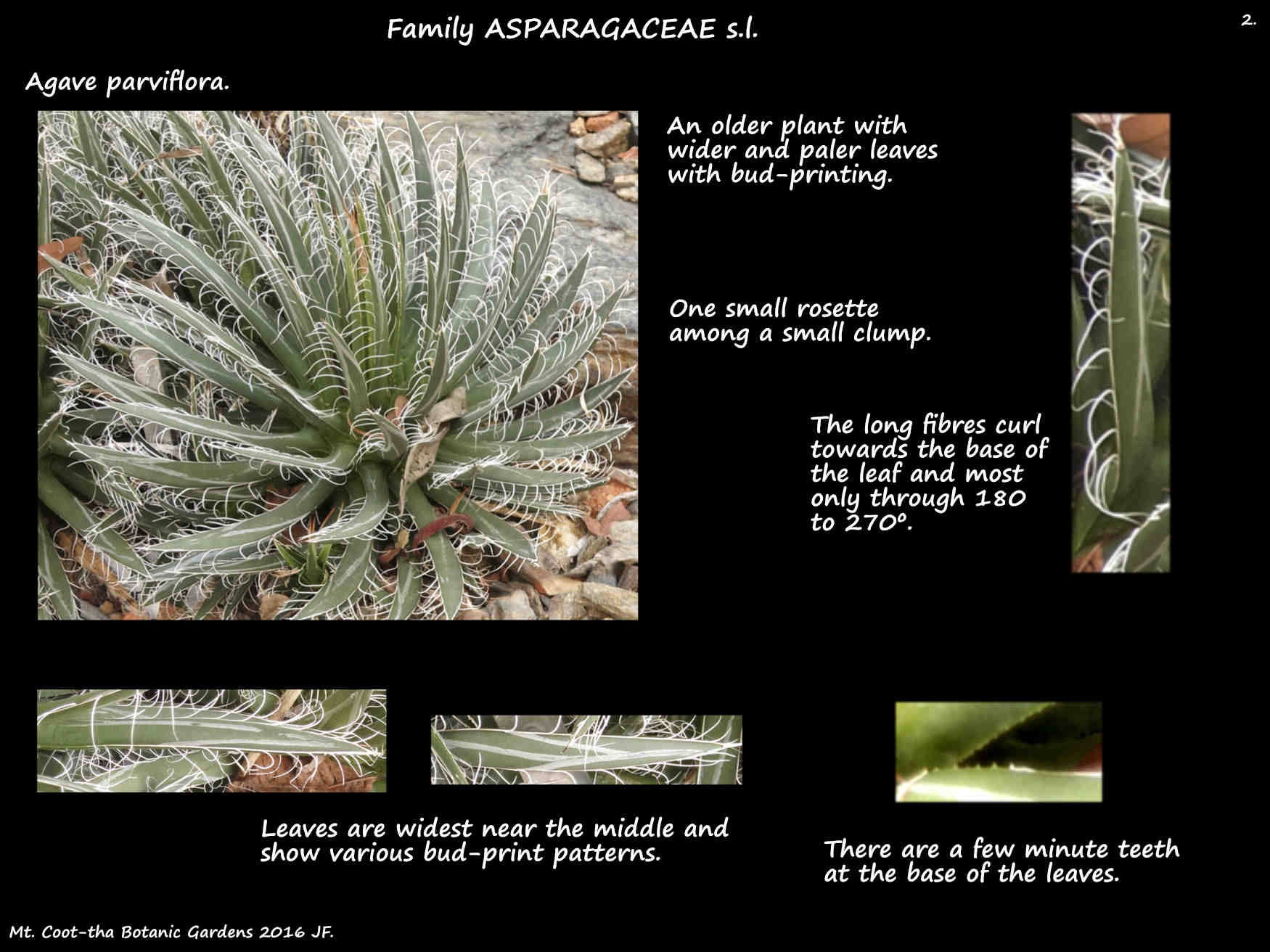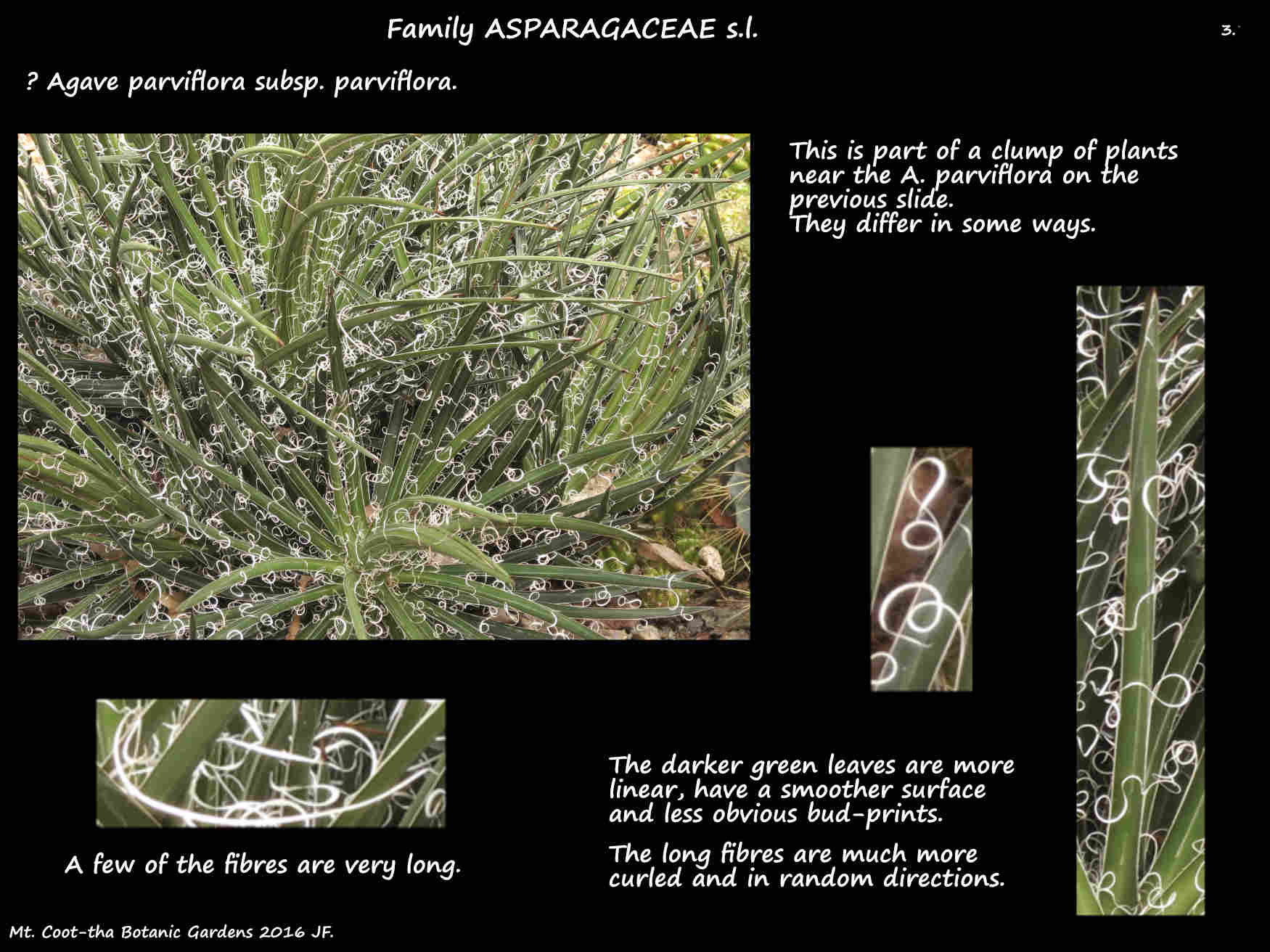Agave parviflora.
The Smallflower Agave is a perennial herb that can live for around 15 years.
They form rosettes around 20 to 25 cm high.
They may remain as a single rosette or produce a few offsets forming a small clump.
The rigid succulent leaves are alternately arranged.
They are up to 20 cm long and 1 to 2 cm wide with a soft terminal spine under 1 cm long.
They can be linear or slightly wider around the middle.
The dark green leaves have straight or angled linear white markings on both surfaces.
This bud printing is caused by pressure from adjacent buds during development.
There are some very small teeth near the base.
The margin has white fibres that curl down towards the base of the leaf.
The green or reddish inflorescence stalk is up to 2.5 m high with flowers along the upper half.
The flowers, on short pedicels are solitary or in clusters of up to 4.
There are 6 tepals in 2 whorls with their bases fused for around 6 mm.
The cream or pale yellow lobes, up to 5 mm long may be erect or curve backwards.
The 6 stamens, inserted at the base of the tube are up to 1.5 cm long.
The yellow anthers are under 1 cm long.
The ovary, 0.5 to 1 cm long has a 1 cm long style.
The fruit are capsules up to 1 cm long with wedge-shaped seeds.
There are a few subspecies described.
Agave parviflora subsp. parviflora.
The small rosettes can be solitary or produce many suckers resulting in a clump.
The oblong to linear leaves are up to 10 cm long.
They are dark green with white bud-prints.
The white fibres along the edge are tightly curled.
There are numerous other filiferous agaves including A. achottii and A. toumeyana.
These are both larger plants up to 50 cm across.
In A. toumeyana the curled fibres are only on the distal half of the leaf.
J.F.




